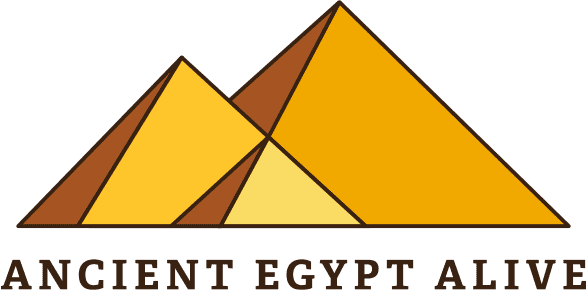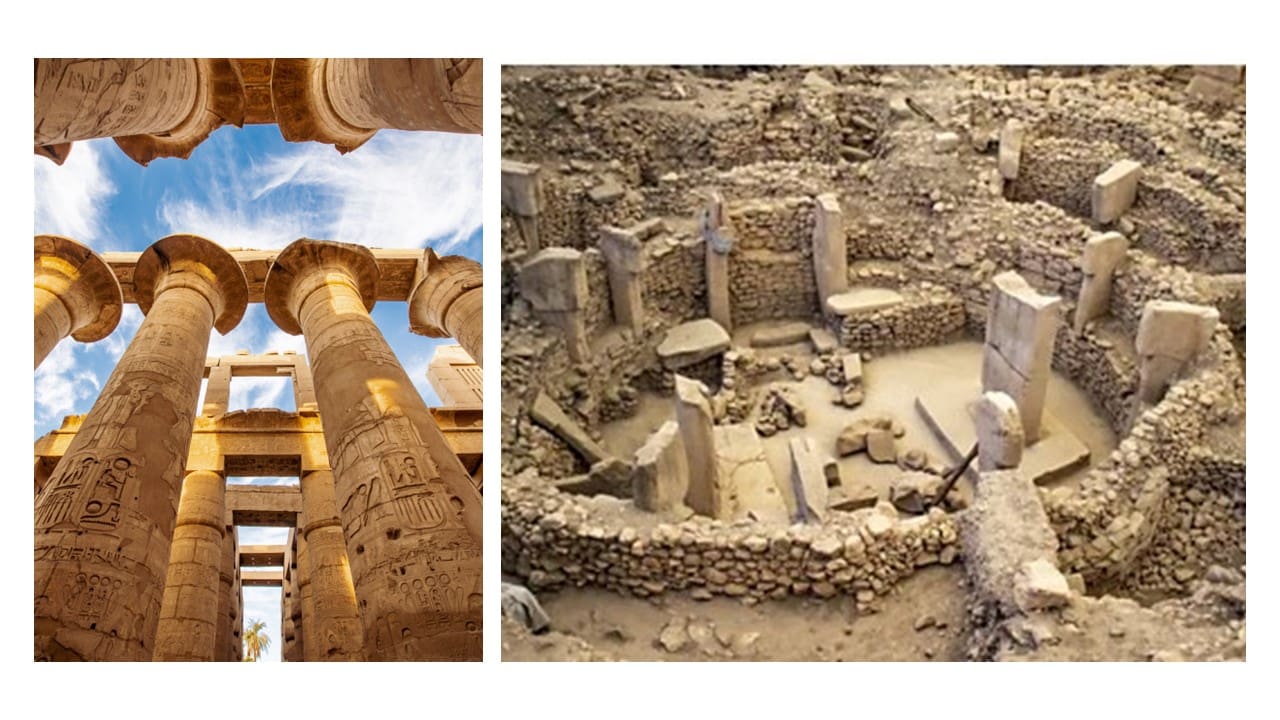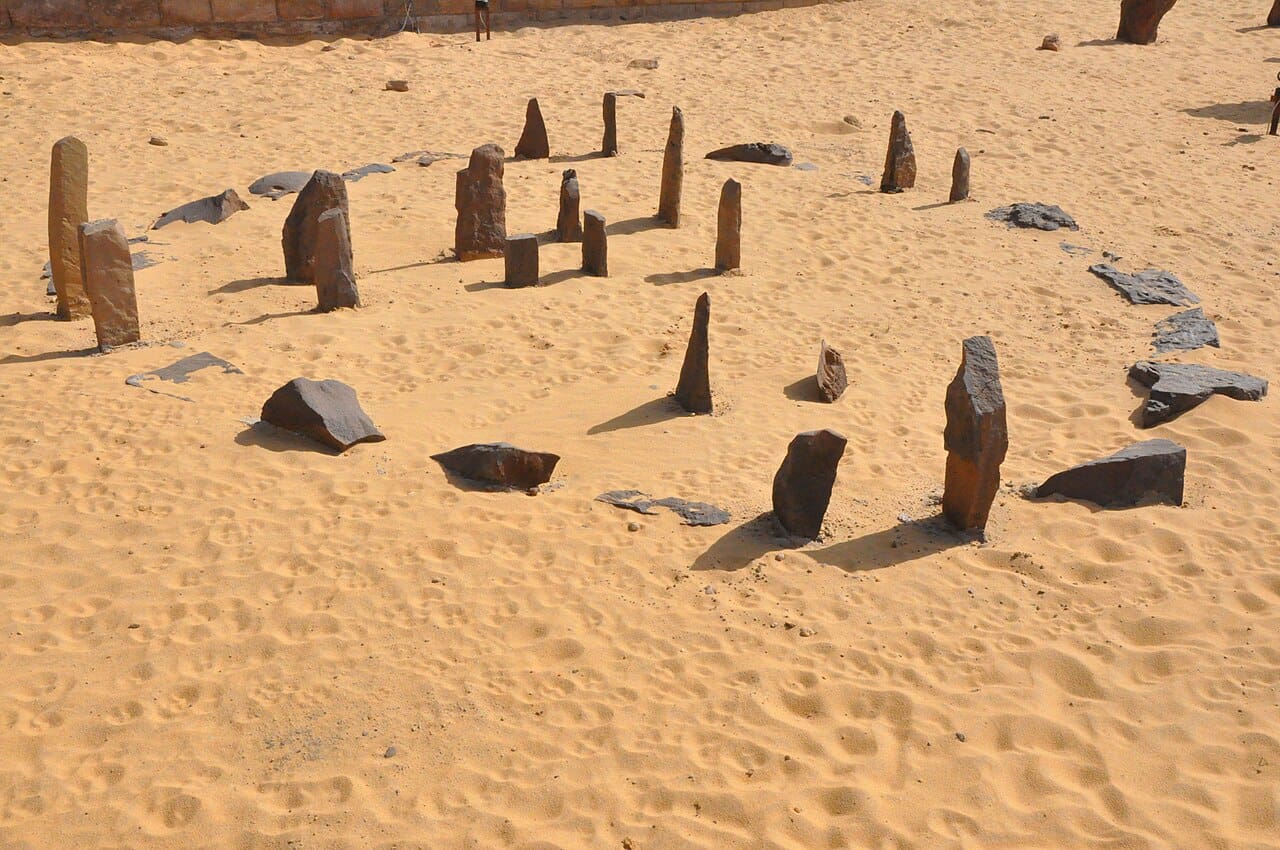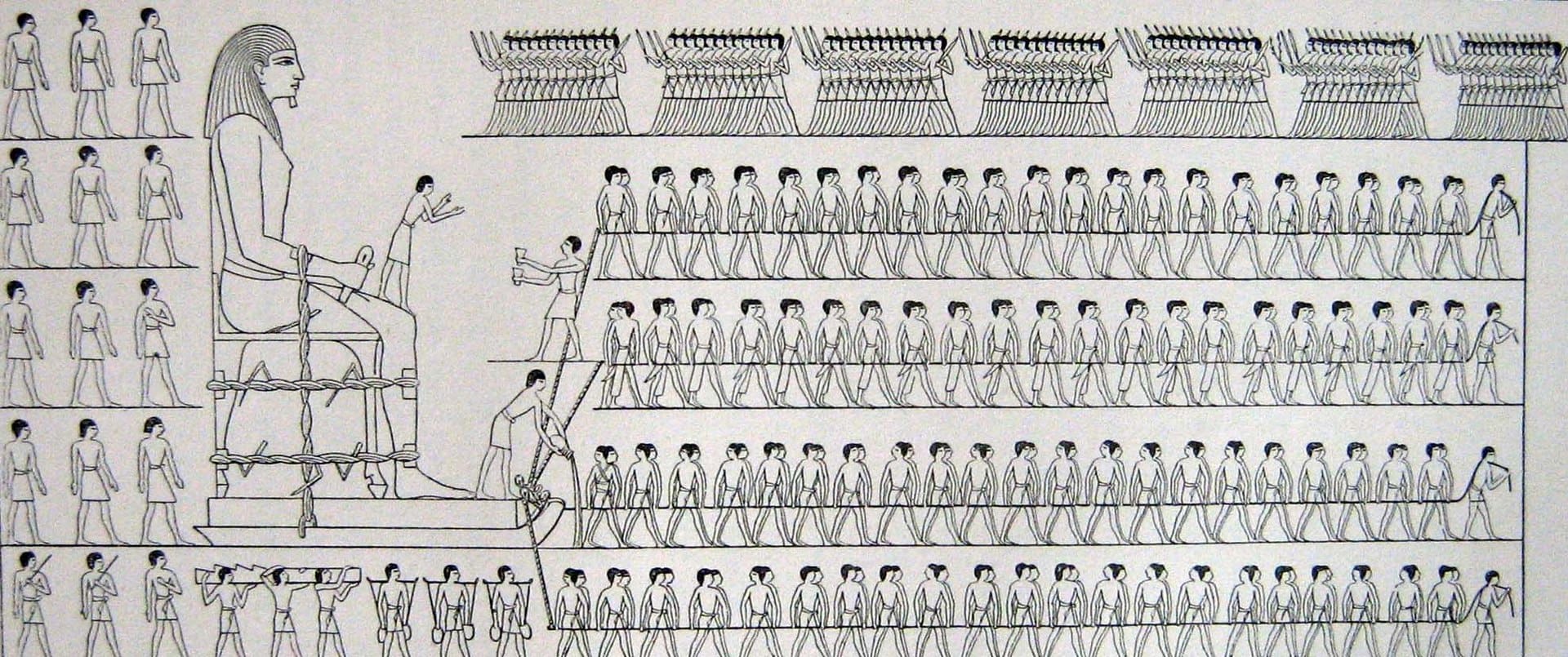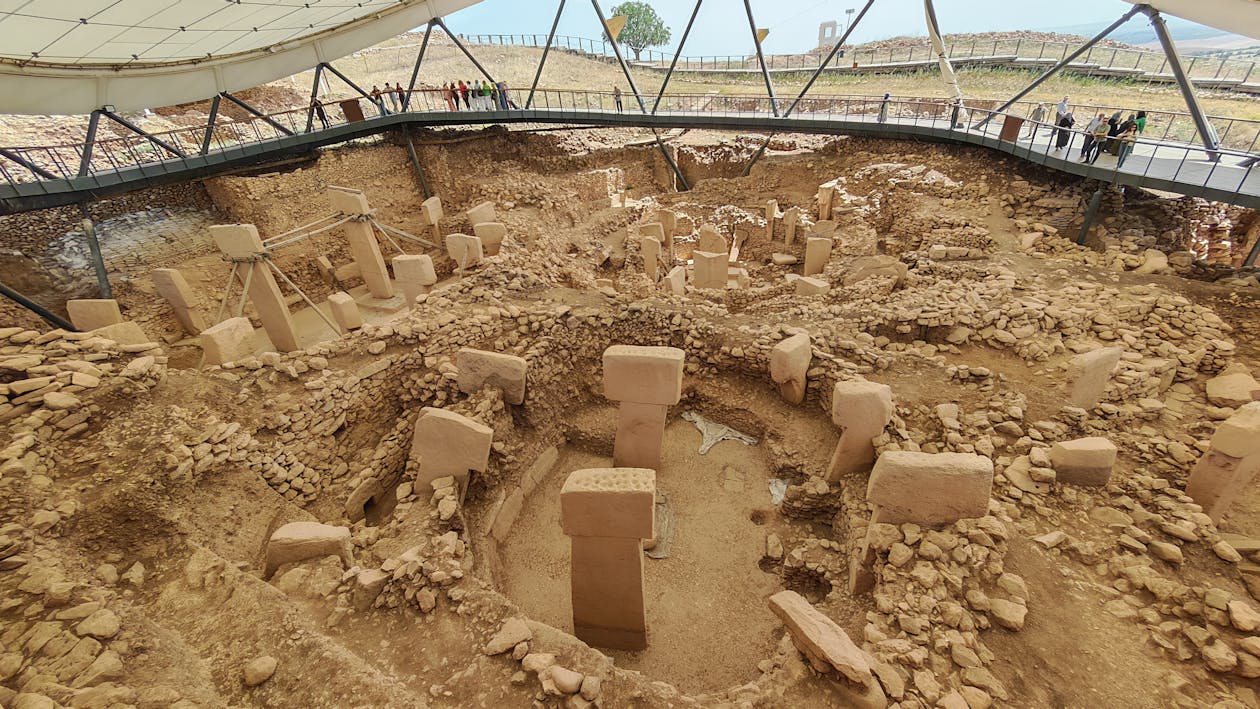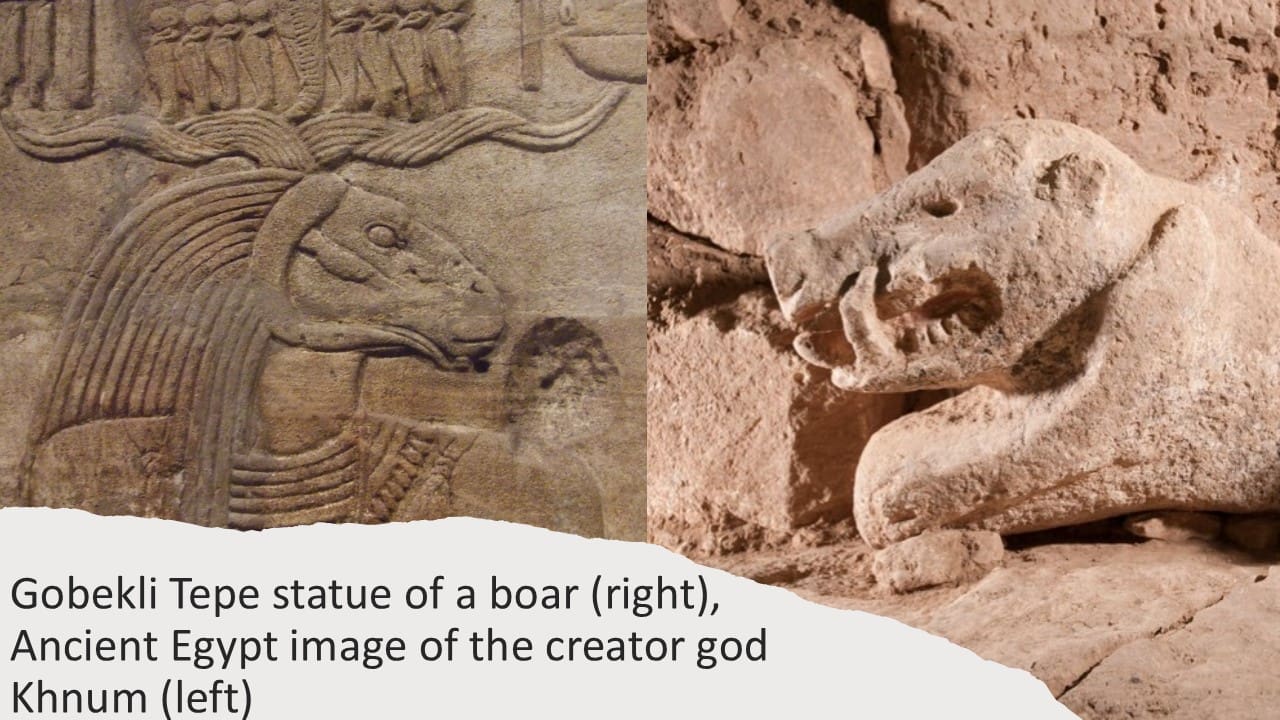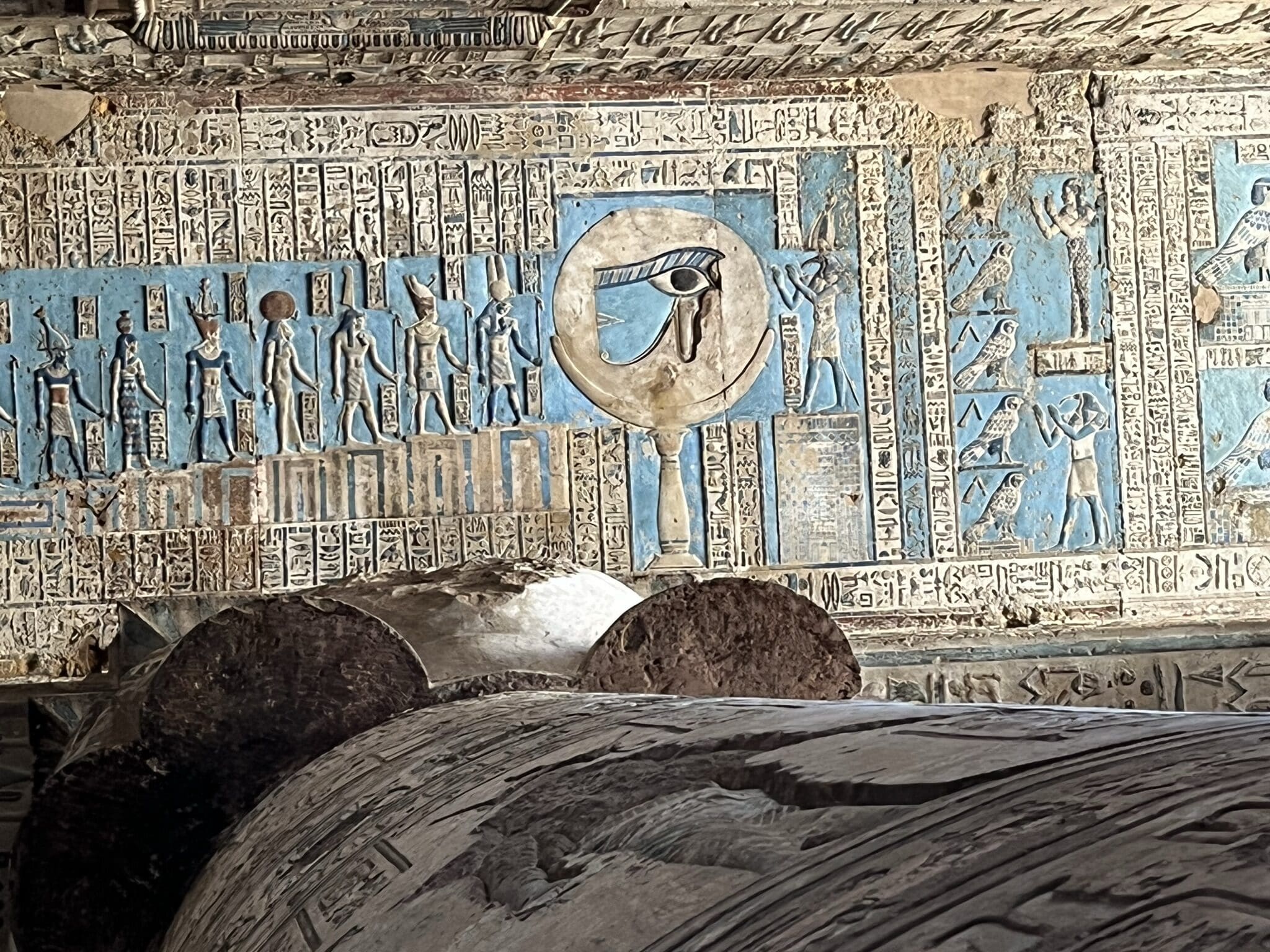By Laura Ranieri Roy,
In the 1990s, archaeologists working in the arid hills of southeastern Turkey made a discovery that would shake the foundations of our understanding of civilization. Near the city of Şanlıurfa, on a remote limestone plateau known as Göbekli Tepe (“Potbelly Hill”), massive T-shaped pillars protruded from the earth—pillars that some thought might be ancient tombstones from the Byzantine era. What emerged from subsequent excavations, however, was something far older and far more mysterious.
Archaeologists uncovered a sprawling complex of concentric stone circles, composed of intricately carved limestone megaliths. These pillars, some towering over 5.5 metres tall and weighing between 10 to 20 tonnes, featured exquisite reliefs of animals—foxes, snakes, boars, birds—as well as abstract symbols and humanoid forms. Radiocarbon dating revealed the site’s astonishing age: at least 11,600 years old, predating Stonehenge by 6,000 years and Egypt’s Great Pyramid by at least 7,000.
Göbekli Tepe belongs to the Pre-Pottery Neolithic period, a time before cities, writing and agriculture. Or was it? It was built with complexity and intention by a society we once believed to be primitive hunter-gatherers. As an Egyptologist, this site fascinates me deeply. Although separated by millennia and geography, Göbekli Tepe and Ancient Egypt share surprising parallels in architecture, symbolism, and cosmic consciousness. In this article, I explore the links that may connect these two remarkable civilizations across time.
Nabta Playa: Egypt’s Earliest Stone Circle and Calendar
Before Giza, before even the unification of Egypt, a group of nomadic herders in southern Egypt constructed a stone circle on a remote plain in Western Desert near the border with Nubia. It’s a place we call Nabta Playa. Dated to between 7000 and 6000 BCE, this remarkable site, like Göbekli Tepe, includes megalithic alignments that likely served as one of the earliest astronomical calendars in human history. Some of the stones align with the summer solstice sunrise, helping these early people predict the coming of the Nile flood season—a critical time for survival and sustenance.
Nabta Playa also seems to have ancient cow burials and massive stone-carved cows, hinting at early cattle cults. This reverence for bovines would later become central in Egyptian mythology, particularly in the form of Hathor, the cow goddess of love and fertility.
The existence of Nabta Playa provides a compelling precursor to Egypt’s later temples and observatories. It also serves as a first point of comparison to Göbekli Tepe, suggesting that different cultures across the ancient world were experimenting with megaliths, celestial alignment, and sacred symbolism thousands of years before traditional “civilization” began.
- Monumental Construction with Primitive Tools
How did the builders of Göbekli Tepe accomplish such an architectural feat with no metal tools or beasts of burden? Like the ancient Egyptians, they shaped and erected massive stones using basic implements—primarily flint tools, antler horns—along with an extraordinary level of coordination. The limestone pillars, many quarried from nearby sources up to two kilometers away, were likely moved with ropes made of plant fibres, wooden sledges, and human muscle.
In Egypt, thousands of years later, similar methods were employed at a vastly larger scale. The Great Pyramid at Giza was constructed with more than 2 million blocks of limestone and granite, moved with sledges, copper tools, and dolerite pounders. Egyptologists now know the workforce consisted of organized, well-fed Egyptian labourers, conscripted from across the nation many of whom viewed their work as a sacred duty. Could the builders of Göbekli Tepe have shared a similar spiritual motivation, gathering seasonally to create sacred space?
- Alignments to the Cosmos
One of the most intriguing theories about Göbekli Tepe is its alignment to celestial phenomena. Scholars have suggested that the enclosures may have been oriented to track the rising of particular stars or constellations—notably Sirius or the constellation of Orion. While conclusive evidence is still debated, the concept of aligning sacred structures with the heavens is one that the ancient Egyptians mastered.
At Giza, the pyramids are famously aligned with cardinal points and may also correlate with the stars of Orion’s Belt, associated with Osiris, god of the afterlife. Temples such as Abu Simbel are precisely oriented to solar events—twice a year, the sun’s rays illuminate statues within the inner sanctum. This cosmic harmony achieved in architecture underscores how in tune the ancients were with the movements of the stars and planets in the sky.
Could Göbekli Tepe represent the very beginnings of this worldview—a prototype of sacred astronomy that would be fully realized in ancient Egypt?
- Animal Symbols and Spiritual Meaning
The art of Göbekli Tepe is rich with depictions of animals: foxes, wild boars, vultures, bulls, and serpents dominate the reliefs. These wild creatures were likely imbued with symbolic or spiritual meaning, even if we do not yet fully understand their role. Interestingly, many of these same animals appear in the symbolic and religious world of Ancient Egypt.
The bull in Egypt represented strength, fertility, and divine kingship. The snake, often a cobra, symbolized protection and chaos, while the jackal was associated with Anubis & Wepwawet, the former, the god of mummification and the latter, “the opener of the ways” . Birds, especially vultures and falcons, held protective and divine roles. In Egypt, these animals were frequently anthropomorphized, often depicted in composite forms as deities—gods with animal heads and human bodies. At Göbekli Tepe, by contrast, the animals appear as they are in nature, not yet woven into a formal pantheon. Also, there are no images of domesticated animals, as there are in Ancient Egypt.
Does this suggest that Göbekli Tepe represents an earlier stage in the development of sacred iconography? A time when wild animals were venerated in and of themselves, rather than as vessels for the divine? Perhaps the temple-builders of Egypt inherited this visual vocabulary and developed it into their theocratic cosmology.
- Skywatchers and Sacred Time
Göbekli Tepe may have been more than a ritual center—it may have served as an early observatory. Many scholars believe its circular enclosures were aligned with celestial events such as solstices and equinoxes, allowing ancient people to track the rhythms of the sky and gather seasonally for sacred observances.
Recent findings, including a 2024 study by Dr. Martin Sweatman, suggest the site’s builders carved a lunisolar calendar into the stone: 12 lunar months plus 11 extra days, tracking the solar year. If correct, it would be the world’s oldest known calendar—memorializing a catastrophic comet strike around 10,850 BCE and marking the beginnings of agricultural timekeeping.
Ancient Egypt, thousands of years later, continued this tradition in refined form. Temples like Karnak were aligned to solar events, while the heliacal rising of Sirius anchored their 365-day calendar.
Whether in prehistoric Turkey or pharaonic Egypt, we see the same impulse: to align society with the cosmos and honor the divine order written in the stars.
- Ancient Grain Eaters & Beer Drinkers? Diet and Early Agriculture
Though often classified as a site of hunter-gatherers, evidence at Göbekli Tepe suggests its builders were on the cusp of agricultural life. Archaeobotanical remains show that einkorn wheat and wild barley were collected and possibly cultivated. Flint sickles and grinding stones found at the site support the idea that rudimentary farming activities were beginning to supplement hunting. Based on the evidence of liquids found in large basins – they may, like the Ancient Egyptians enjoying grain alcohols from barley – beer!
Almonds and pistachios—gathered from the local environment—were also part of their diet. These nuts, delicacies in ancient Egypt, point to a broader pattern of selective harvesting and seasonal planning. In Egypt, grains like emmer wheat and barley were the foundation of daily sustenance and central to religious offerings. Thus, both societies centered their lives, rituals, and economies on the bounty of the earth, whether wild or cultivated.
Shared Human Vision, Separated by Millennia
Though mind boggling to fathom that early neolithic man could have achieved such amazing feats – and engaged in such complex rituals 6000 years before we thought, it all makes sense. These were men, who thought, created, worshipped and celebrated like their successors the Egyptians millennia later.
The builders of Göbekli Tepe and the architects of ancient Egypt were separated by over 6,000 years and vast geographic distance. Yet, they shared something essential: a deep desire to reach for the divine, to organize society around sacred architecture, and to mirror the heavens on earth. Both civilizations demonstrated an astonishing ability to coordinate large-scale building projects, to embed symbolic meaning in stone, and to infuse life with spiritual purpose.
While there is no direct lineage between Göbekli Tepe and Ancient Egypt, the parallels suggest that the seeds of religious architecture, cosmic alignment, sacred symbolism, and even agricultural life were already germinating in humanity’s earliest temple-builders. Ancient Egypt would refine and formalize these impulses into one of the most enduring civilizations in human history.
Perhaps, in Göbekli Tepe, we glimpse the spiritual spark that would later blaze into the brilliance of the pyramids, temples, and deities along the Nile.
Join Me to Explore These Wonders Further
I invite you to delve deeper into these themes in my richly illustrated online lecture, where we explore the astonishing archaeology of Göbekli Tepe and draw powerful comparisons with Ancient Egypt.
“Before the Pharaohs: Göbekli Tepe: The World First Temple?
ZOOM lecture – June 19, 2025 at 4pm EDT
Register here: https://www.eventbrite.ca/e/1341406556119?aff=oddtdtcreator
Don’t miss this opportunity to journey across time and space—from prehistoric Turkey to the temples of ancient Egypt—and discover the deep connections that bind us to our sacred past.
Or Travel With Me to Göbekli Tepe Itself!
Would you love to join a rare small-group adventure to Eastern and Western Turkey in 2026, including a guided visit to Göbekli Tepe?
Join our deluxe Anatolian Odyssey small group tour September 21–October 5, 2026, a once-in-a-lifetime journey.
Explore full tour details and reserve your spot here: https://ancientegyptalive.com/anatolian-odyssey-deluxe-two-week-small-group-turkey-tour-september-21-october-5-2026/
